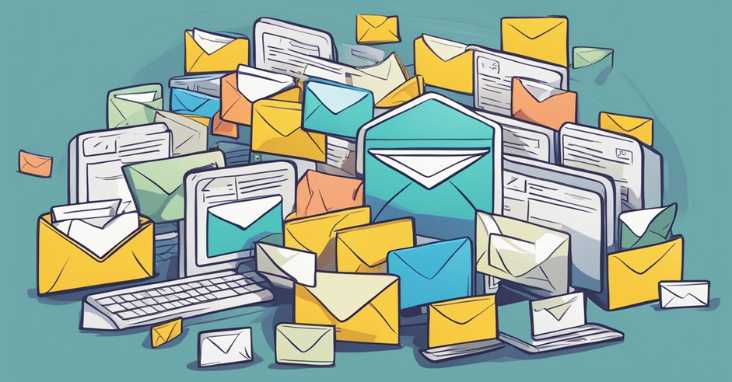How to check in on your loved ones in hope all is well? Send caring texts, make calls, use video chats, and ask open questions to show you’re there for them. #CheckIn #Care
In today’s digital age, email has become an essential tool for communication in both personal and professional settings. Emails are often the first point of contact between individuals, and the way we greet each other can set the tone for the entire conversation. One common greeting that is frequently used in professional emails is “Hope all is well.”

While this greeting may seem innocuous, it can actually have a significant impact on the recipient’s perception of the sender and the overall tone of the email. As such, it’s important to understand the role of greetings in email communication and how “Hope all is well” is perceived in professional contexts.
In this article, we will analyze the use of “Hope all is well” in professional email communication, explore alternatives to this greeting, and discuss best practices for business email etiquette. We will also examine how emails can be used to enhance well-being and provide tips for crafting effective and professional emails.
Key Takeaways
- The way we greet each other in emails can set the tone for the entire conversation.
- “Hope all is well” is a common greeting in professional emails, but it may not always be appropriate.
- Using alternative greetings and following best practices for business email etiquette can help enhance communication and build strong professional relationships.
The Role of Greetings in Email Communication

Importance of Politeness and Small Talk
In email communication, greetings play a crucial role in establishing a positive tone and building rapport between the sender and recipient. Politeness and small talk are essential in creating a friendly and approachable atmosphere, which can lead to better communication and collaboration.
Using a polite greeting, such as “Dear” or “Hello,” followed by the recipient’s name, shows respect and acknowledges their importance. In addition, including a brief sentence or two of small talk, such as asking about their day or mentioning a recent event, can help establish a personal connection and build a sense of camaraderie.
Building Social Bonds Through Email
Email communication can often be impersonal and devoid of emotion, but the use of greetings and small talk can help bridge that gap. By establishing a personal connection through friendly greetings and small talk, email communication can become more human and less robotic.
Furthermore, building social bonds through email can lead to stronger professional relationships and increased collaboration. When individuals feel comfortable and connected with their colleagues, they are more likely to work together effectively and produce better results.
Including greetings and small talk in email communication may seem like a small detail, but it can have a significant impact on the tone and effectiveness of the message. By taking the time to establish a personal connection, individuals can build stronger relationships and achieve better outcomes.
For more information on the role of greetings in email communication, check out this article from Harvard Business Review.
Analyzing “Hope All Is Well” in Professional Contexts
Connotations of “Hope All Is Well”
The phrase “Hope all is well” is a common greeting used in professional contexts, particularly in emails. While the intention behind this phrase is to convey well wishes, it can also have negative connotations. According to a study conducted by Boomerang, an email productivity tool, the phrase “Hope all is well” has a response rate of only 30.5%, making it one of the least effective email openers.
One possible reason for this low response rate is that the phrase is overused and lacks personalization. It can also come across as insincere or disingenuous, especially if the sender has no prior relationship with the recipient. Therefore, it is important to consider alternative email openers that are more personalized and engaging.
Email Openers and Their Impact on Response Rates
Email openers play a crucial role in determining response rates. According to a study by HubSpot, personalized subject lines have a 26% higher open rate than generic ones. Similarly, emails that include the recipient’s name in the greeting have a 29.3% higher click-through rate than those that do not.
Therefore, it is recommended to use personalized email openers that address the recipient by name and reference specific details about their work or interests. This not only increases the chances of a response but also demonstrates that the sender has taken the time to research and understand the recipient’s needs.
In conclusion, while “Hope all is well” may seem like a harmless greeting, it can have negative connotations and low response rates. By using personalized email openers, professionals can increase their chances of receiving a response and building meaningful relationships with their contacts.
Reference: The Best Email Greetings and Sign-offs for 2022
Alternatives to “Hope All Is Well”

In email communication, it is common to open with a greeting that expresses goodwill. However, the phrase “Hope all is well” has become overused and lacks personalization. In this section, we will explore some alternatives to this phrase that can help add a personal touch to your email greetings.
Personalization in Email Greetings
Personalization is key when it comes to email communication. Using the recipient’s name or referencing a recent interaction can help create a more meaningful connection. Some alternatives to “Hope all is well” that incorporate personalization include:
- “I hope this email finds you doing well, [Name].”
- “It was great meeting you at [Event/Meeting], [Name].”
- “I wanted to follow up on our conversation about [Topic], [Name].”
By using the recipient’s name or referencing a recent interaction, you are showing that you value the relationship and are invested in the conversation.
Context-Specific Alternatives
Another way to add a personal touch to your email greetings is to consider the context of the email. Depending on the purpose of the email, there may be alternative phrases that are more appropriate. Some examples include:
- “Congratulations on [Accomplishment]!”
- “Thank you for your help with [Task/Project].”
- “I wanted to share some exciting news about [Topic].”
By tailoring your greeting to the purpose of the email, you are showing that you have taken the time to consider the recipient’s perspective and needs.
Overall, there are many alternatives to “Hope all is well” that can help add a personal touch to your email greetings. By incorporating personalization and considering the context of the email, you can create a more meaningful connection with your recipient.
For more tips on email communication, check out this resource, which provides a comprehensive guide to writing effective emails.
Enhancing Well-Being Through Email

Emails are a ubiquitous form of communication in today’s society. While they are often used for work-related purposes, they can also be used to enhance well-being. In this section, we will explore how emails can be used to promote well-being and care.
Expressions of Well-Being and Care
Expressions of well-being and care can be conveyed through email. One way to do this is by using positive adjectives and adverbs. For example, instead of saying “I hope you’re doing okay,” one could say “I hope you’re doing exceptionally well.” This small change can make a big difference in how the recipient feels.
Additionally, expressing gratitude and appreciation can also enhance well-being. A simple “thank you” can go a long way in making someone feel valued and cared for. In fact, research has shown that expressing gratitude can lead to increased well-being and happiness.
The Role of Adverbs and Adjectives
Adverbs and adjectives play an important role in enhancing well-being through email. Positive adverbs, such as “amazingly” and “wonderfully,” can help convey a sense of excitement and positivity. Positive adjectives, such as “fantastic” and “incredible,” can help convey a sense of admiration and appreciation.
However, it is important to use adverbs and adjectives in moderation. Overusing them can come across as insincere or over-the-top. It is important to strike a balance between expressing positivity and being genuine.
In conclusion, emails can be a powerful tool for enhancing well-being and care. By using expressions of well-being and care and carefully choosing adverbs and adjectives, one can make a positive impact on the recipient’s well-being.
Best Practices for Business Email Etiquette

In today’s fast-paced business world, email has become an integral part of communication. It is essential to maintain professionalism and etiquette while drafting business emails. Here are some best practices to follow when crafting business emails:
Crafting a Timely and Considerate Response
When responding to business emails, it is crucial to be timely and considerate. Responding promptly shows that you value the sender’s time and are committed to the conversation. If you need more time to provide a detailed response, let the sender know that you have received their email and will respond as soon as possible.
In addition, it is essential to be considerate when crafting your response. Ensure that your email is clear, concise, and relevant to the sender’s query. Avoid using jargon or technical terms that the recipient may not understand. Use a friendly and professional tone to maintain a positive relationship with the sender.
Incorporating Sales Pitches and Calls to Action
Business emails are an excellent opportunity to incorporate sales pitches and calls to action. However, it is crucial to do so in a manner that is not pushy or aggressive. Start by building a rapport with the recipient and understanding their needs before introducing a sales pitch or call to action.
When incorporating a sales pitch, ensure that it is relevant to the recipient’s needs and interests. Use persuasive language and highlight the benefits of your product or service. Be clear and concise in your message and provide a call to action that encourages the recipient to take action.
To learn more about business email etiquette, check out this comprehensive guide by HubSpot.
Conclusion

In conclusion, it is important to remember that hope is a powerful force that can help individuals overcome difficult times. Whether it is in personal or professional settings, expressing hope and positivity can have a significant impact on one’s well-being.
By saying “I hope all is well with you” or “I hope you are doing well,” individuals can convey empathy and support to others. This simple gesture can make a world of difference, especially during challenging times.
It is also important to note that hope is not just a feeling, but an action. Taking proactive steps towards achieving one’s goals and aspirations can help maintain a sense of hope and purpose. This can include seeking out resources and support systems, setting achievable goals, and staying optimistic in the face of adversity.
For those seeking additional resources on the topic of hope, Psychology Today offers a comprehensive overview of the science behind hope and its benefits.
Overall, by cultivating hope and expressing it to others, individuals can create a more positive and supportive world for themselves and those around them.
Frequently Asked Questions

What are some appropriate alternatives to ‘Hope all is well’ in a professional email?
While ‘Hope all is well’ is a common greeting in professional emails, there are other alternatives that can be used. Some examples include:
- “I hope this email finds you well”
- “I hope you’re doing well”
- “I hope you’re having a good day”
How should one respond to a message that starts with ‘Hope all is well’?
It is appropriate to respond with a similar greeting or acknowledgment of the well-being of the sender. For example, “Thank you, I am doing well. I hope you are as well.”
What is the underlying meaning when someone says ‘Hope all is well’?
The phrase is often used as a polite greeting to inquire about the recipient’s well-being. It can also be seen as a way to establish rapport or build a connection before getting to the main content of the email.
Is ‘Hope all is well’ considered a formal or informal greeting?
While the phrase is commonly used in both formal and informal settings, it is more commonly used in informal settings. In more formal settings, it may be appropriate to use a more formal greeting.
In what contexts is it suitable to use ‘Hope all is well’?
The phrase is suitable for use in a variety of contexts, including professional and personal emails. It is often used as an opening greeting before getting to the main content of the email.
Are there any quotes that convey a similar sentiment to ‘Hope all is well’?
One quote that conveys a similar sentiment is “May your troubles be less and your blessings be more, and nothing but happiness come through your door.” (Irish Blessing)
For more information on email etiquette and greetings, check out this article by the Business Writing Blog.
Compare hundreds of Employee Engagement Software in our Software Marketplace















